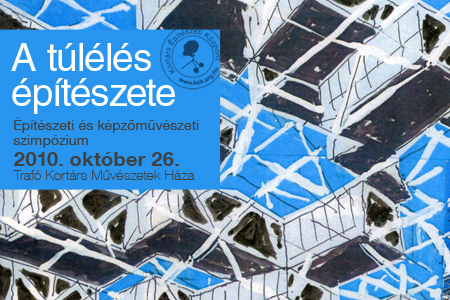The Architecture of Survival. Learning from Yona Friedman
An international symposium on Yona Friedman’s work and legacy
Trafó – House of Contemporary Arts, Budapest, October 26, 2010
KÉK – Hungarian Contemporary Architecture Centre in collaboration with Trafó – House of Contemporary Arts, Ludwig Museum – Museum of Contemporary Art and the French Institute of Budapest is organizing a conference aiming to contextualize Yona Friedman’s work in today’s social, urban and architectural context by bringing together architects, urbanists, artists, scholars and activists to give critical interpretations of his legacy and to introduce projects inspired by his work.
Yona Friedman is undoubtedly one of the most influential architectural thinkers of the second half of the 20th century. From the foundation of the Groupe d’études d’architecture mobile to his Spatial City and The Bridges of Shanghai, Friedman’s oeuvre includes forms and ideas that have fecundated architectural discourses for decades, and inspired generations of architects and artists. In many respects, his focus on infrastructures and bottom-up planning methods is as relevant today as it was in the 1960s and 1970s, when these ideas were developed: they all reflect the needs of rapidly changing societies and respond to concerns of an increasing mobility.
In recent years, Yona Friedman’s works have enjoyed a genuine renaissance: besides numerous publications of both his writings and analyses of his work in various contexts, his drawings, models, texts, cartoons and other forms of documentation have been exhibited in the most prestigious art museums and galleries, and were acquired by the most important art collections worldwide. While the acknowledgement of his influence on contemporary art practices is important, the aesthetization of Friedman’s work arguably impoverishes his message by divesting it of its political significance. He is one of the few architects whose building principles enabled a seamless transition between his formal innovations and utopian concepts of mobility and flexibility and the radical pragmatism of architectures of necessity and emergency. An important, if not central, dimension of Friedman’s work is his philosophy of poverty and his emphasis on the architecture of survival, concepts whose significance may be revealed in their influence on development programs, policy guidelines and actual practices of architecture and urbanism.
The ambition of the conference is to analyze Yona Friedman’s ideas on art, architecture, urbanism, social work and technology, and their relevance in these fields then and today, especially in the context of the current economic crisis. The lectures will position his early work within the context of urban renewal theories of the sixties; revisit key notions of his thinking such as mobility, infrastructure or participation with respect to their current applicability; and assess his impact on contemporary architecture and art and the critical implications of his work’s presentation in a visual art (aesthetic) context.
The conference will be held in Budapest, Yona Friedman’s native town, in conjunction with a long-term exhibition project initiated by Trafó – House of Contemporary Arts and Ludwig Museum – Museum of Contemporary Art. Parallel to the conference Yona Friedman’s solo show will be on view in Trafo Gallery.

